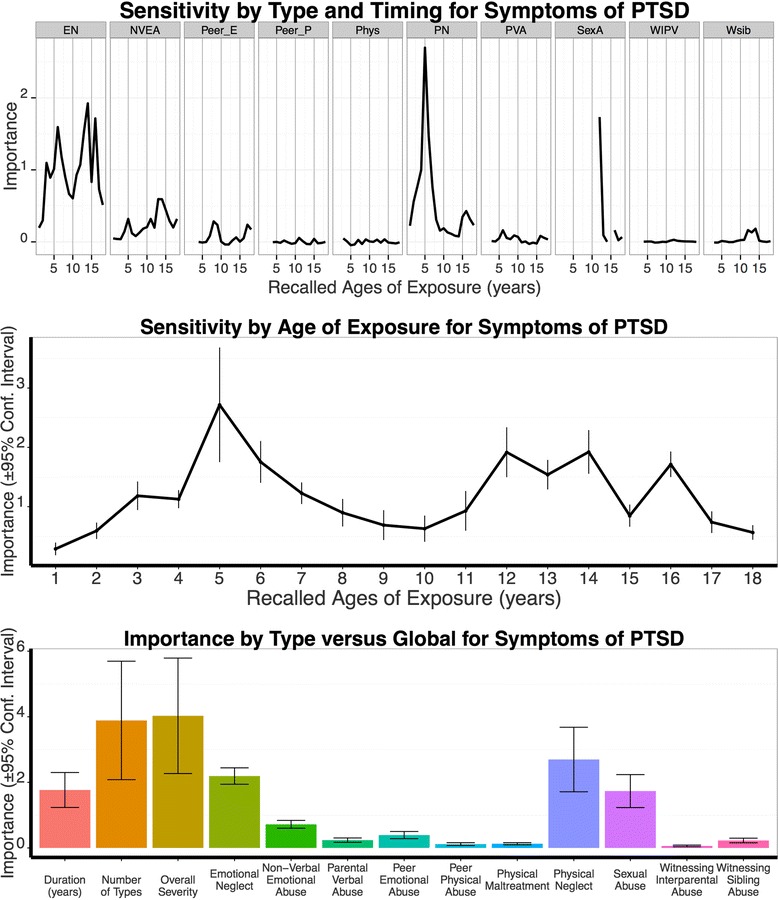Fig. 3.

Results from Random Forest Regressions Modeling Symptoms of PTSD. Top: Sensitivity by Type and Timing Results. Importance of type is represented per age (abscissa: years between 1-18) for the MACE types EN: emotional neglect, NVEA: non-verbal emotional abuse, Peer_E: peer emotional abuse, Peer_P: peer physical bullying, Phys: parental physical maltreatment, PN: physical neglect, PVA: parental verbal abuse, SexA: sexual abuse, WIPV: witnessing interparental violence, Wsib: witnessing violence to siblings. Mid: Sensitive Period regardless of Type. Bottom: Type versus Global Model. Note: For the sensitivity of type and timing analysis (results displayed in A) missing values point to specific types and timings with low reported exposure < 5 %. Values ≤ 0 have no predictive importance
